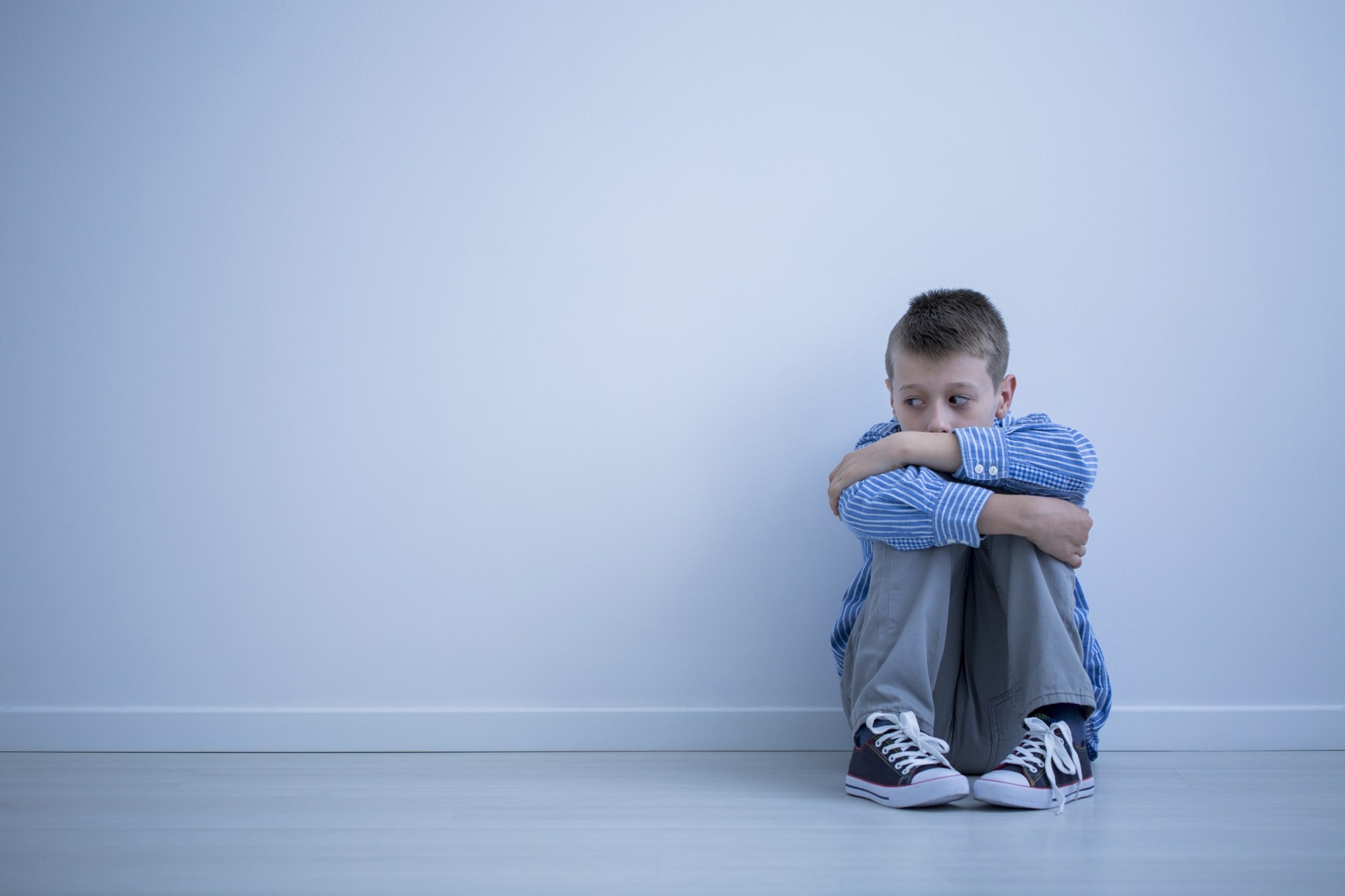A phobia is a condition in which an individual suffers from an intense fear of an object or situation that lasts for a prolonged period of time and has no rational cause. It may also be defined as the emergence of an unwanted fear relating to a particular situation, incident, or object.

Image Credit: Ground Picture/Shutterstock
Phobias are a type of anxiety disorder. Children who suffer from one or more phobias constantly have anxiety. The most common phobias comprise a fear of heights, public interaction, blood, insects, or animals.
Types of phobias
Phobias are common in both children and adults. Some phobias that arise during childhood resolve spontaneously as the child grows, while others may persist. Some significant phobias that affect children are as follows:
- Agoraphobia: In this state, the child feels anxious when entering an open space
- Panic disorder: A sudden occurrence of fear or nervousness that leads to a rapid and distressing increase in the heartbeat
- Specific phobias: Conditions in which the child is afraid of particular objects or places
- Separation anxiety disorder: This is a condition where children are afraid of being separated from their loved ones (father, mother, siblings, or caregiver)
- Selective mutism: In this state, the child is nervous or afraid to speak in front of a public gathering, such as at a cultural event or contest
- Social anxiety disorder: In this disorder, children compare themselves with other children and conclude that they are less worthy or useless, becoming extremely shy and incapable of interacting with others outside their homes
Causes of phobia in children
Research has found that the causes of phobia lie in different elements such as biological, family, and environmental factors.
- Biological Causes: Chemicals called neurotransmitters play a vital role in transmitting messages to and from the brain and controlling a person's feelings. When the levels of essential neurotransmitters such as dopamine and serotonin are affected, they can become a cause of anxiety.
- Family or Genetic Factors: Like the color of hair, eyes, and skin, the child has a tendency to inherit a genetic predisposition to fear from his parents. The people around them influence children; if a person is stressed or anxious, the child tends to develop the same feelings. For instance, if a child's parent has a fear of cockroaches, then there is a high possibility for the child to develop the same.
- Environmental factors: Environmental factors, such as a traumatic event, may trigger the development of phobias in children. For children, it might be a common situation like going to school after a long vacation that results in heightened anxiety.
Common age-related fears
- 2–4 years: Children of this age fear loud noises, sounds made by animals, toilets and bathrooms, ghosts, death, and sometimes being alone.
- 4–6 years: Children of this age group often fear the dark. They can also imagine frightening creatures or ghosts and worry that these characters may disturb them. Meeting strangers is a huge stress for such children, which can create a lot of stress. Other fears include anxiety about losing one's parents, about the death of a family member, or becoming injured.
- 8 years: These children might complain of simple and common fears such as the fear of social rejection, shifting to a new place to live, having to go to school, or being late. They may also constantly worry about personal danger.
- 9–10 years: These children are pre-teens. They may fear that their parents will separate or divorce or fear that they may have to face danger in their lives. This commonly manifests as fear of blood and meeting with injuries.
- 11–12 years: Frequently, these children think that they might be kidnapped. Being alone or in a dark place also creates severe anxiety in these children. Boys in this age group usually lose much of their fearfulness steadily.
- 13 years: These children have all the common fears that younger children have. However, they also frequently seem to have a fear of heights.
- 14–16 years: As these teenagers are more mature compared to their younger counterparts, their fears take other forms, such as unreasonable fear of being in car accidents, plane crashes, terrorist attacks, fear of infections, fear of sexual relations, and fear of talking in public or in a crowd.
Some young children habitually imagine a nonliving object as a living thing. This imaginary being becomes the basis for fears. They imagine that the fictional creature is dangerous and may harm them somehow. If they constantly feed their imagination, they may even begin to behave like their creature.
In children, a diagnosis of anxiety disorder or phobia is made after a comprehensive medical and psychiatric examination. It may not be easy to diagnose these conditions. Parents have the tremendous responsibility of identifying excessive or constant feelings of anxiety in their children at the early stages and addressing them themselves or seeking professional help if the child does not respond appropriately. Early diagnosis and treatment can go a long way in helping children to recover completely and avoid further psychological problems in their adult life.
References
Further Reading